Soy Doctora en Ciencias Biológicas de la Universidad Nacional Autónoma de México, Magister en Ciencias Biológicas de la Universidad Nacional de Colombia, Especialista en Docencia para la Educación Superior de la U.D.C.A y Bióloga de la Pontificia Universidad Javeriana. Mi actividad académica ha sido de carácter interdisciplinar colaborando en actividades de docencia en pregrado y posgrado con diferentes disciplinas como la arquitectura y el diseño industrial, la ingeniería civil, la planeación territorial y la gestión ambiental. Inicié mi actividad investigativa en la ecología de poblaciones y comunidades analizando el efecto del aprovechamiento de especies forestales sobre poblaciones de otras especies de interés comercial, así como el efecto de la calidad de sitio sobre el crecimiento de especies forestales. Durante mi doctorado incursioné en la ecología de los ecosistemas, analizando el efecto de la historia de uso sobre variables ecosistémicas. Posteriormente amplié mi interés hacia los sistemas socioecológicos con énfasis en la valoración biofísica y sociocultural y la distribución espacial de los servicios ecosistémicos especialmente del bosque tropical seco y recientemente en ecosistemas de bosque andino y urbanos.
GRUPOS DE INVESTIGACIÓN: SOSTENIBILIDAD AMBIENTAL
LÍNEAS DE INVESTIGACIÓN: Sostenibilidad Ambiental y Sostenibilidad social
PROGRAMA: Maestría en Ciencias Ambientales
CATEGORÍA MINCIENCIAS: Asociado
NIVEL DE FORMACIÓN: Doctorado
LINEAS DE TRABAJO: Servicios ecosistémicos, Ecología de ecosistemas, Ecología del paisaje.
PRODUCTOS DESTACADOS
Resilience of Soil Properties to Land‐Use Change in a Tropical Dry Forest Ecosystem
Fecha de publicación: 13/02/2018
Land‐use change in tropical dry forests can dramatically alter soil properties, but little is known about their resilience. We assessed soil resilience by examining resistance to, as well as recovery from, pasture use by smallholder farmers in western Mexico. We measured 25 soil and vegetation properties and compared old‐growth forest (OGF) sites and pastures to evaluate resistance to pasture use. We assessed whether those properties recovered to OGF reference values after pasture abandonment by analyzing the trajectories of properties along a chronosequence of secondary vegetation. Finally, we assessed whether recovery of soil properties could be inferred from the recovery of vegetation properties. Nine out of 25 properties differed significantly between the OGF sites and pastures. From these nine nonresistant properties, six (i.e., penetration resistance, soil C concentration, soil C/N, basal area, individual density, rarefied species richness of woody vegetation) showed recovery as a significant positive relationship with forest age. In contrast, surface litter C, litter C/N, and soil available P showed no resistance and no recovery within the successional period examined (up to 35 y). The best vegetation indicator for the recovery of some soil properties was woody species richness. This may suggest that functional differences of colonizing plants matter for recovery after pasture use. Our findings indicate that soil was overall resilient to pasture use, but some properties did not recover synchronously with vegetation properties during succession. Thus, more attention should be paid to soil function, because full ecosystem recovery is often inferred from the recovery of vegetation properties.
Más información ⇨
- « Anterior
- 1
- …
- 3
- 4
- 5
- 6
- 7
- 8
- Siguiente »

